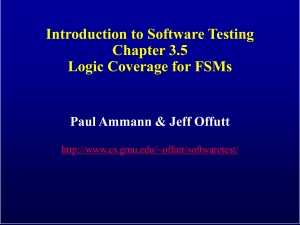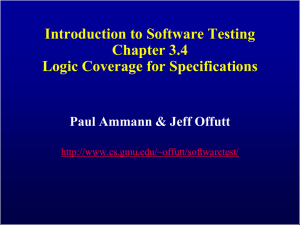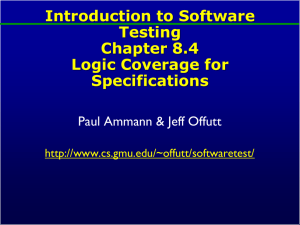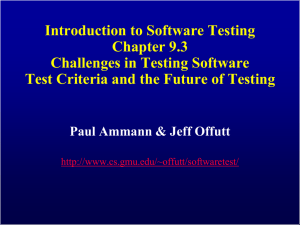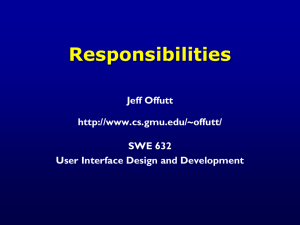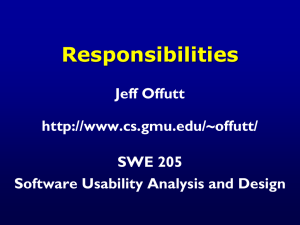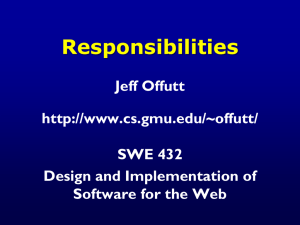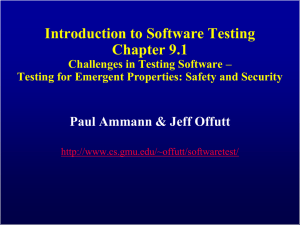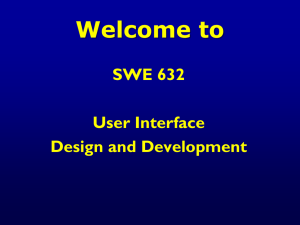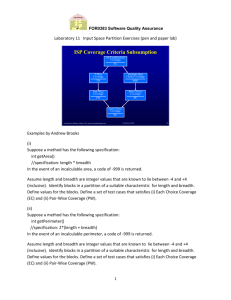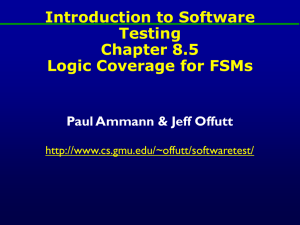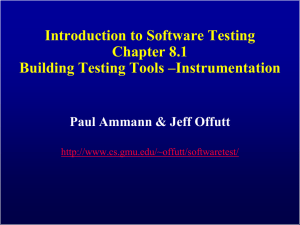Ch1-Intro-summary.ppt
advertisement
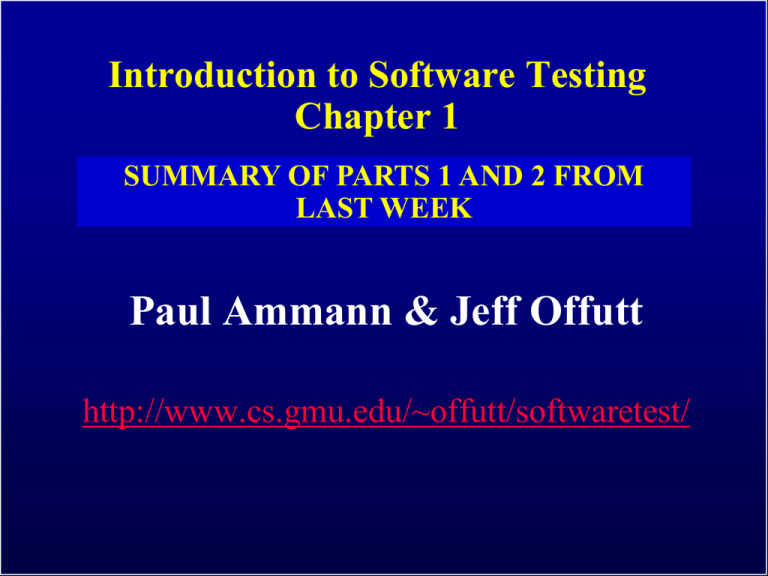
Introduction to Software Testing
Chapter 1
SUMMARY OF PARTS 1 AND 2 FROM
LAST WEEK
Paul Ammann & Jeff Offutt
http://www.cs.gmu.edu/~offutt/softwaretest/
A Talk in 3 Parts
1. Why do we test ?
2. What should we do during testing ?
3. How do we get to this future of testing ?
We are in the middle of a revolution in how software is tested
Research is finally meeting practice
Introduction to Software Testing (Ch 1)
© Ammann & Offutt
2
Why Test?
You’re going to spend at least half of
your development budget on testing,
whether you want to or not
If you don’t know why you’re conducting
a test, it won’t be very helpful
If you don’t start planning for the test when
the functional requirements are formed, you’ll
never know why you’re conducting the test
Program Managers often say:
“Testing is too expensive.”
Not testing is even more expensive
Introduction to Software Testing (Ch 1)
© Ammann & Offutt
3
Part 2 : What ?
New : Test Coverage Criteria
A tester’s job is simple : Define a model of the
software, then find ways
to cover it
Test
Requirements: Specific things that must be satisfied or
covered during testing
Test
Criterion: A collection of rules and a process that define
test requirements
Testing researchers have defined dozens of criteria, but they
are all really just a few criteria on four types of structures …
Introduction to Software Testing (Ch 1)
© Ammann & Offutt
4
New : Criteria Based on Structures
Structures : Four ways to model software
1. Graphs
2. Logical Expressions
3. Input Domain
Characterization
4. Syntactic Structures
Introduction to Software Testing (Ch 1)
(not X or not Y) and A and B
A: {0, 1, >1}
B: {600, 700, 800}
C: {swe, cs, isa, infs}
if (x > y)
z = x - y;
else
z = 2 * x;
© Ammann & Offutt
5
Coverage Overview
Four Structures for
Modeling Software
Graphs
Logic
Input Space
Syntax
Applied to
Applied
to
Source
Specs
Source
Specs
Design
Introduction to Software Testing (Ch 1)
Applied
to
FSMs
DNF
Source
Models
Integ
Use cases
© Ammann & Offutt
Input
6
